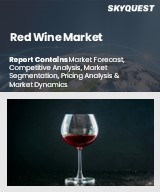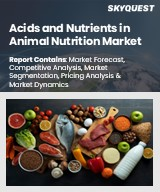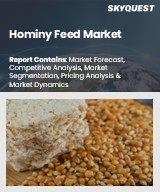
|
시장보고서
상품코드
1800295
세계의 와인 시장 예측(2025-2030년)Global Wine Market - Forecasts fom 2025 to 2030 |
||||||
세계의 와인 시장은 2025년 4,529억 700만 달러에서 2030년까지 5,040억 7,900만 달러로 확대되고, CAGR 2.16%를 보일 것으로 예측됩니다.
세계의 와인 시장은 이국적인 와인을 선호하는 도시 지역의 소비자 증가, 건강 지향 증가, 전자상거래 플랫폼 확대 등을 배경으로 강력한 성장을 이루고 있습니다. 주요 요인으로는 라이프 스타일의 진화, 와인의 건강 효과(특히 레드 와인)에 대한 의식의 향상, 포장 기술의 선진화 등이 있습니다. 특히 신흥경제국에서는 와인제품의 프리미엄화와 음식점, 라운지, 사교클럽의 급증이 시장을 뒷받침하고 있습니다. 규제의 복잡성과 경제 불확실성 등의 과제에도 불구하고, 시장은 지속적으로 확대되는 태세에 있으며, 중국이 중요한 성장 기지로 부상하고 있습니다.
시장 성장 촉진요인
낮은 칼로리와 건강 지향 알코올 음료, 특히 레드 와인에 대한 수요의 급증이 주요 촉진요인입니다. 심장 건강을 지원하고 혈액에서 항산화 물질을 늘리는 등의 레드 와인의 장점은 소비자의 건강 의식 증가와 생활 수준의 향상과 일치합니다. 심혈관 질환의 유병률 증가는 더 건강한 대안으로 인식되는 유기 적포도주에 대한 수요를 더욱 높여줍니다. 전자상거래 플랫폼의 상승은 편리한 쇼핑 경험, 신속한 배달, 다양한 상품을 제공하는 또 다른 주요 촉진요인입니다. 북미, 유럽 등의 선진지역에서는 기술적인 진보와 유통망의 확대로 와인의 온라인 판매는 매년 약 15% 성장할 것으로 예측되고 있습니다. 제조업체 각사는 파트너십과 새로운 전자상거래 플랫폼을 활용하여 시장 점유율을 획득하는 한편, 리슬링이나 열대 과일 와인과 같은 이국적인 맛을 포함한 제품 혁신에 의해 소비자의 기호의 변화에 대응하고 있습니다.
목차
제1장 서론
- 시장 개요
- 시장의 정의
- 분석 범위
- 시장 세분화
- 통화
- 전제조건
- 기준연도과 예측연도의 타임라인
제2장 분석 방법
- 분석 데이터
- 출처
- 분석 디자인
제3장 주요 요약
- 분석 하이라이트
제4장 시장 역학
- 시장 성장 촉진요인
- 시장 성장 억제요인
- Porter's Five Forces 분석
- 업계 밸류체인 분석
제5장 세계의 와인 시장 : 유형별
- 소개
- 레드
- 화이트
- 기타
제6장 세계의 와인 시장 : 유통 채널별
- 소개
- 오프라인
- 온라인
제7장 세계의 와인 시장 : 지역별
- 소개
- 북미
- 유형별
- 유통 채널별
- 국가별
- 미국
- 캐나다
- 멕시코
- 남미
- 유형별
- 유통 채널별
- 국가별
- 브라질
- 아르헨티나
- 기타
- 유럽
- 유형별
- 유통 채널별
- 국가별
- 영국
- 독일
- 프랑스
- 스페인
- 이탈리아
- 기타
- 중동 및 아프리카
- 유형별
- 유통 채널별
- 국가별
- 사우디아라비아
- 아랍에미리트(UAE)
- 이스라엘
- 기타
- 아시아태평양
- 유형별
- 유통 채널별
- 국가별
- 일본
- 중국
- 인도
- 한국
- 인도네시아
- 태국
- 기타
제8장 경쟁 환경과 분석
- 주요 기업과 전략 분석
- 신흥기업과 시장수익성
- 기업 합병인수(M&A), 합의, 사업 협력
- 시장 점유율 분석
제9장 기업 프로파일
- E. & J. Gallo Winery
- Treasury Wine Estates Limited
- Accolade Wines
- The Wine Group
- Constellation Brands
- Maison Castel
- Casella Family Brands
- Concha y Toro
- Penfolds
- Davide Campari-Milano SpA
The Global Wine Market is expected to grow from USD 452.907 billion in 2025 to USD 504.079 billion in 2030, at a CAGR of 2.16%.
The global wine market is experiencing robust growth, driven by urban consumers' increasing preference for exotic wines, rising health consciousness, and the expansion of e-commerce platforms. Key factors include evolving lifestyles, growing awareness of wine's health benefits, particularly red wine, and advancements in packaging technology. The market is further supported by the premiumization of wine products and the proliferation of eateries, lounges, and social clubs, particularly in developing economies. Despite challenges such as regulatory complexities and economic uncertainties, the market is poised for sustained expansion, with China emerging as a significant growth hub.
Market Drivers
The surge in demand for low-calorie, health-focused alcoholic beverages, especially red wine, is a primary growth driver. Red wine's benefits, such as supporting heart health and increasing blood antioxidants, align with rising consumer health consciousness and improved living standards. The growing prevalence of cardiovascular diseases further boosts demand for organic red wines, perceived as healthier alternatives. The emergence of e-commerce platforms is another key driver, offering convenient shopping experiences, prompt delivery, and diverse offerings. In industrialized regions like North America and Europe, online wine sales are projected to grow annually by approximately 15%, driven by technical advancements and expanded distribution networks. Manufacturers are leveraging partnerships and new e-commerce platforms to capture market share, while product innovation, including exotic flavors like Riesling and tropical fruit wines, caters to evolving consumer preferences.
Market Segmentation
The market is segmented by wine type, distribution channel, and geography. Red wine dominates due to its health benefits, while white and other wines also contribute to market diversity. Distribution channels include online and offline, with e-commerce gaining traction for its accessibility and variety. Geographically, the market spans North America, South America, Europe, the Middle East and Africa, and Asia Pacific. China stands out as a key market, driven by rising disposable incomes, an expanding middle class, and a shift toward wine as a symbol of sophistication and healthier consumption. The Chinese government's investments in domestic vineyard cultivation and winemaking technology further bolster the market, enhancing the quality and recognition of local wines.
Industry Analysis
Porter's Five Forces model evaluates competitive dynamics, analyzing supplier power, buyer influence, and market rivalry. An industry value chain analysis identifies key players in production, packaging, and distribution, highlighting their roles in driving innovation and market reach. The regulatory framework, including regional policies on grape sourcing and production standards, shapes market dynamics, particularly in key regions like the U.S. and China. These regulations ensure quality and sustainability, fostering consumer trust.
Competitive Landscape
Key players, such as Pernod Ricard, are expanding through strategic collaborations to enhance their premium wine portfolios. The focus on acquisitions and product innovation, such as organic and exotic wine offerings, strengthens market positions. Companies are plotted in a vendor matrix as leaders, followers, challengers, or niche players based on their strategies and market presence.
Challenges
Regulatory complexities, such as changes in grape crush district boundaries in regions like California, and economic uncertainties pose challenges. Additionally, ensuring consistent quality across diverse markets requires robust supply chain management.
The global wine market is set for steady growth, driven by health-conscious consumer trends, e-commerce expansion, and premiumization. China's rising affluence and domestic wine production make it a pivotal market, while North America and Europe benefit from strong online sales growth. Continued innovation, regulatory support, and strategic partnerships will be critical for sustaining market momentum and meeting evolving consumer demands.
Key Benefits of this Report:
- Insightful Analysis: Gain detailed market insights covering major as well as emerging geographical regions, focusing on customer segments, government policies and socio-economic factors, consumer preferences, industry verticals, and other sub-segments.
- Competitive Landscape: Understand the strategic maneuvers employed by key players globally to understand possible market penetration with the correct strategy.
- Market Drivers & Future Trends: Explore the dynamic factors and pivotal market trends and how they will shape future market developments.
- Actionable Recommendations: Utilize the insights to exercise strategic decisions to uncover new business streams and revenues in a dynamic environment.
- Caters to a Wide Audience: Beneficial and cost-effective for startups, research institutions, consultants, SMEs, and large enterprises.
What do businesses use our reports for?
Industry and Market Insights, Opportunity Assessment, Product Demand Forecasting, Market Entry Strategy, Geographical Expansion, Capital Investment Decisions, Regulatory Framework & Implications, New Product Development, Competitive Intelligence
Report Coverage:
- Historical data from 2020 to 2024 & forecast data from 2025 to 2030
- Growth Opportunities, Challenges, Supply Chain Outlook, Regulatory Framework, and Trend Analysis
- Competitive Positioning, Strategies, and Market Share Analysis
- Revenue Growth and Forecast Assessment of segments and regions including countries
- Company Profiling (Strategies, Products, Financial Information, and Key Developments among others.
Market Segmentation:
By Type
- Red
- White
- Others
By Distribution Channel
- Online
- Offline
By Geography
- North America
- United States
- Canada
- Mexico
- South America
- Brazil
- Argentina
- Others
- Europe
- United Kingdom
- Germany
- France
- Spain
- Italy
- Others
- Middle East and Africa
- Saudi Arabia
- UAE
- Israel
- Others
- Asia Pacific
- Japan
- China
- India
- South Korea
- Indonesia
- Thailand
- Others
TABLE OF CONTENTS
1. INTRODUCTION
- 1.1. Market Overview
- 1.2. Market Definition
- 1.3. Scope of the Study
- 1.4. Market Segmentation
- 1.5. Currency
- 1.6. Assumptions
- 1.7. Base, and Forecast Years Timeline
2. RESEARCH METHODOLOGY
- 2.1. Research Data
- 2.2. Sources
- 2.3. Research Design
3. EXECUTIVE SUMMARY
- 3.1. Research Highlights
4. MARKET DYNAMICS
- 4.1. Market Drivers
- 4.2. Market Restraints
- 4.3. Porter's Five Forces Analysis
- 4.3.1. Bargaining Power of Suppliers
- 4.3.2. Bargaining Power of Buyers
- 4.3.3. Threat of New Entrants
- 4.3.4. Threat of Substitutes
- 4.3.5. Competitive Rivalry in the Industry
- 4.4. Industry Value Chain Analysis
5. GLOBAL WINE MARKET BY TYPE
- 5.1. Introduction
- 5.2. Red
- 5.3. White
- 5.4. Others
6. GLOBAL WINE MARKET BY DISTRIBUTION CHANNEL
- 6.1. Introduction
- 6.2. Offline
- 6.3. Online
7. GLOBAL WINE MARKET BY GEOGRAPHY
- 7.1. Introduction
- 7.2. North America
- 7.2.1. By Type
- 7.2.2. By Distribution Channel
- 7.2.3. By Country
- 7.2.3.1. USA
- 7.2.3.1.1. By Type
- 7.2.3.1.2. By Distribution Channel
- 7.2.3.2. Canada
- 7.2.3.2.1. By Type
- 7.2.3.2.2. By Distribution Channel
- 7.2.3.3. Mexico
- 7.2.3.3.1. By Type
- 7.2.3.3.2. By Distribution Channel
- 7.2.3.1. USA
- 7.3. South America
- 7.3.1. By Type
- 7.3.2. By Distribution Channel
- 7.3.3. By Country
- 7.3.3.1. Brazil
- 7.3.3.1.1. By Type
- 7.3.3.1.2. By Distribution Channel
- 7.3.3.2. Argentina
- 7.3.3.2.1. By Type
- 7.3.3.2.2. By Distribution Channel
- 7.3.3.3. Others
- 7.3.3.3.1. By Type
- 7.3.3.3.2. By Distribution Channel
- 7.3.3.1. Brazil
- 7.4. Europe
- 7.4.1. By Type
- 7.4.2. By Distribution Channel
- 7.4.3. By Country
- 7.4.3.1. United Kingdom
- 7.4.3.1.1. By Type
- 7.4.3.1.2. By Distribution Channel
- 7.4.3.2. Germany
- 7.4.3.2.1. By Type
- 7.4.3.2.2. By Distribution Channel
- 7.4.3.3. France
- 7.4.3.3.1. By Type
- 7.4.3.3.2. By Distribution Channel
- 7.4.3.4. Spain
- 7.4.3.4.1. By Type
- 7.4.3.4.2. By Distribution Channel
- 7.4.3.5. Italy
- 7.4.3.5.1. By Type
- 7.4.3.5.2. By Distribution Channel
- 7.4.3.6. Others
- 7.4.3.6.1. By Type
- 7.4.3.6.2. By Distribution Channel
- 7.4.3.1. United Kingdom
- 7.5. Middle East and Africa
- 7.5.1. By Type
- 7.5.2. By Distribution Channel
- 7.5.3. Country
- 7.5.3.1. Saudi Arabia
- 7.5.3.1.1. By Type
- 7.5.3.1.2. By Distribution Channel
- 7.5.3.2. UAE
- 7.5.3.2.1. By Type
- 7.5.3.2.2. By Distribution Channel
- 7.5.3.3. Israel
- 7.5.3.3.1. By Type
- 7.5.3.3.2. By Distribution Channel
- 7.5.3.4. Others
- 7.5.3.4.1. By Type
- 7.5.3.4.2. By Distribution Channel
- 7.5.3.1. Saudi Arabia
- 7.6. Asia Pacific
- 7.6.1. By Type
- 7.6.2. By Distribution Channel
- 7.6.3. Country
- 7.6.3.1. Japan
- 7.6.3.1.1. By Type
- 7.6.3.1.2. By Distribution Channel
- 7.6.3.2. China
- 7.6.3.2.1. By Type
- 7.6.3.2.2. By Distribution Channel
- 7.6.3.3. India
- 7.6.3.3.1. By Type
- 7.6.3.3.2. By Distribution Channel
- 7.6.3.4. South Korea
- 7.6.3.4.1. By Type
- 7.6.3.4.2. By Distribution Channel
- 7.6.3.5. Indonesia
- 7.6.3.5.1. By Type
- 7.6.3.5.2. By Distribution Channel
- 7.6.3.6. Thailand
- 7.6.3.6.1. By Type
- 7.6.3.6.2. By Distribution Channel
- 7.6.3.7. Others
- 7.6.3.7.1. By Type
- 7.6.3.7.2. By Distribution Channel
- 7.6.3.1. Japan
8. COMPETITIVE ENVIRONMENT AND ANALYSIS
- 8.1. Major Players and Strategy Analysis
- 8.2. Emerging Players and Market Lucrativeness
- 8.3. Mergers, Acquisitions, Agreements, and Collaborations
- 8.4. Market Share Analysis
9. COMPANY PROFILES
- 9.1. E. & J. Gallo Winery
- 9.2. Treasury Wine Estates Limited
- 9.3. Accolade Wines
- 9.4. The Wine Group
- 9.5. Constellation Brands
- 9.6. Maison Castel
- 9.7. Casella Family Brands
- 9.8. Concha y Toro
- 9.9. Penfolds
- 9.10. Davide Campari-Milano S.p.A.



















